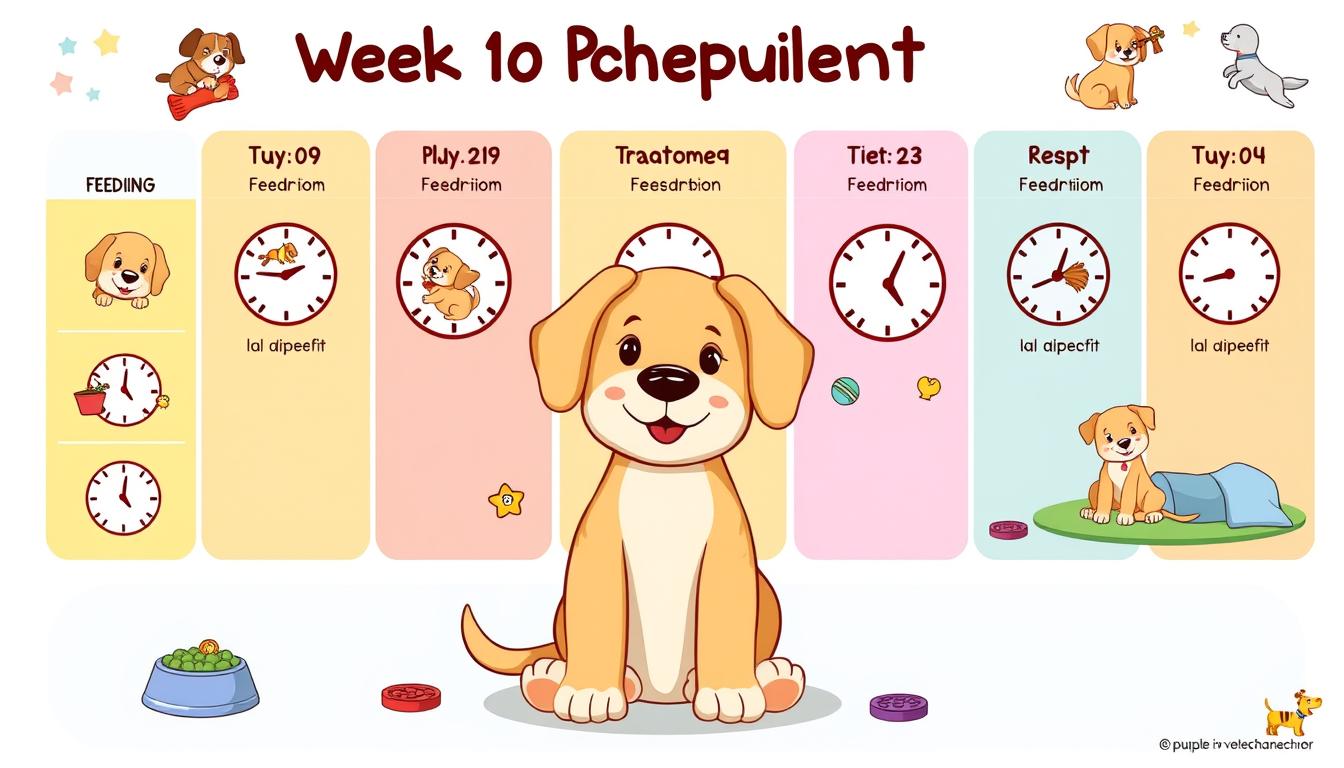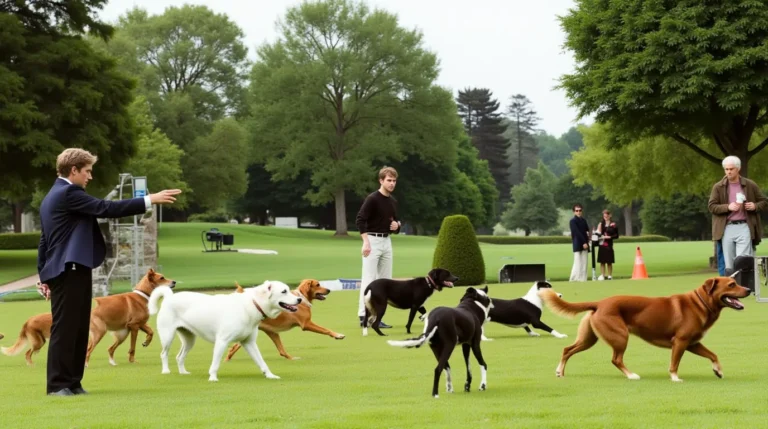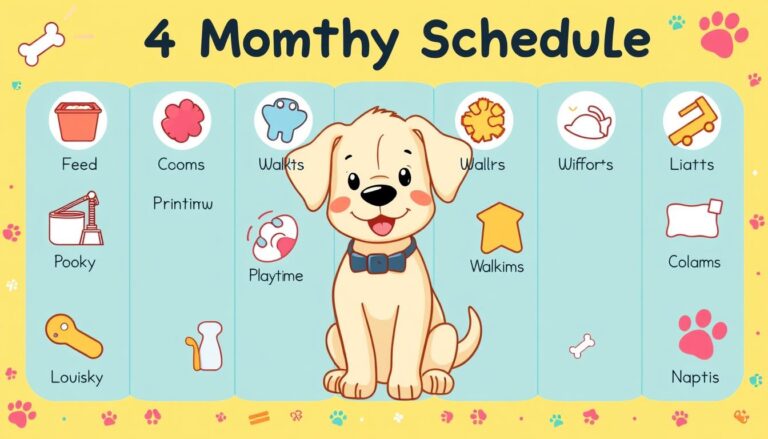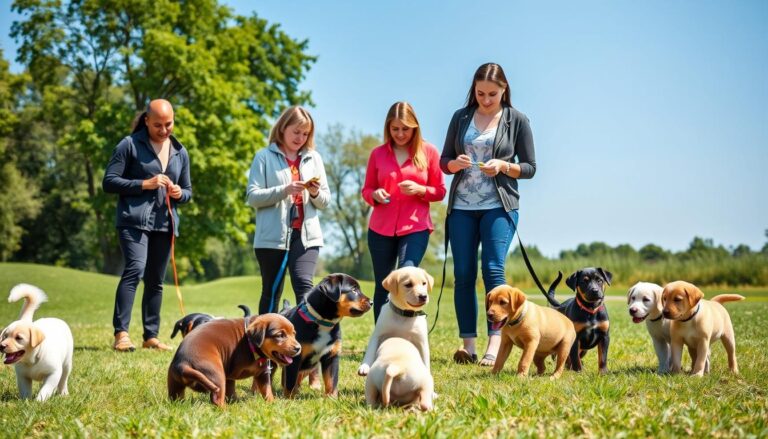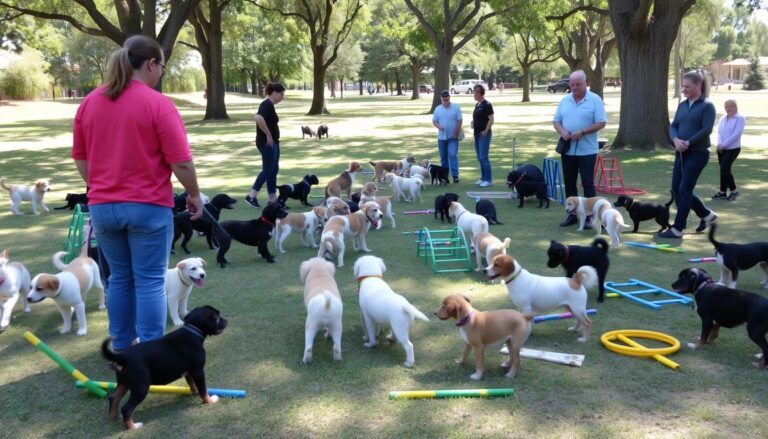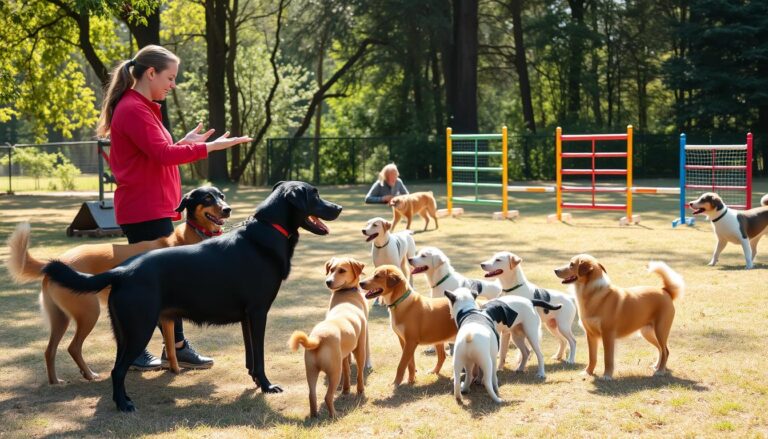Ideal 10 Week Old Puppy Schedule: A Daily Routine for Success
Ideal 10 Week Old Puppy Schedule: A Daily Routine for Success
Getting a new puppy is exciting but can also be scary. As a first-time puppy owner, you want to give your 10-week-old pup the best care. A consistent daily routine is key to meeting your puppy’s needs and helping them grow.
For a young puppy, a structured schedule is very important. It makes your puppy feel safe and helps you bond with them. Following a good 10-week-old puppy schedule ensures your puppy’s physical, mental, and emotional needs are met. This sets them up for a happy and successful life.
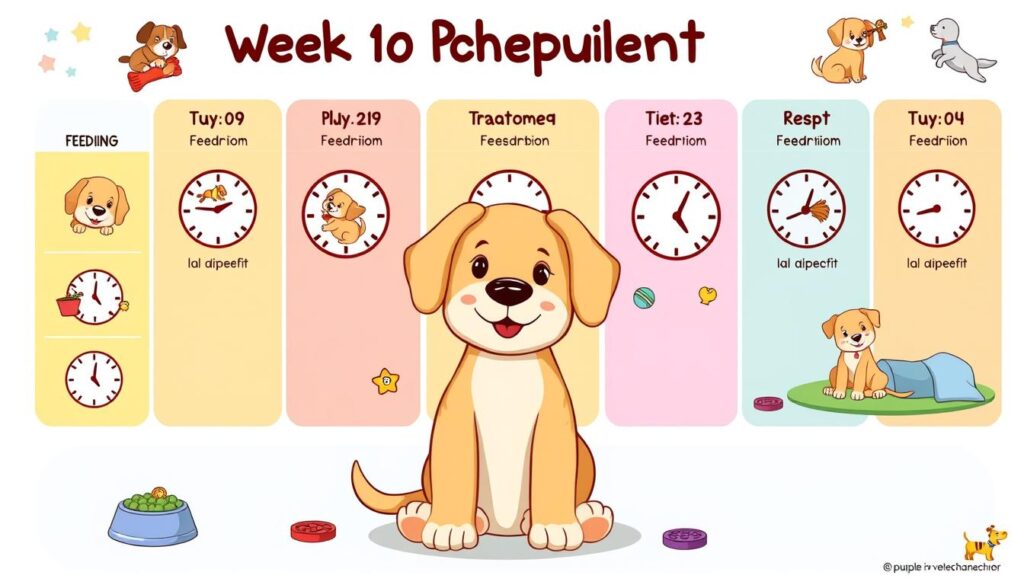
Understanding Your 10 Week Old Puppy Schedule
Raising a 10-week-old puppy is exciting but challenging. It’s important to have a daily routine for a smooth transition. This guide will cover the morning, afternoon, and evening schedules for a 10-week-old pup.
Morning Routine (6 AM – 12 PM)
Begin by taking your puppy out for a potty break as soon as they wake up. This is key for puppy potty training and prevents accidents. After the potty break, give them breakfast. Follow the feeding advice from your vet or the puppy food label.
Allow your pup to rest and digest before play or exercise. The mid-morning is for more potty breaks, training, and play. Use this time for basic puppy training commands like sit, stay, and come. Make sure they get enough mental and physical activity to stay healthy and happy.
Afternoon Activities (12 PM – 6 PM)
In the afternoon, keep up with regular potty breaks, naps, and play. Puppies have short attention spans, so adjust your dog training schedule as needed. Give them new toys or puzzles to keep their minds active and prevent bad behavior.
Evening Schedule (6 PM – Bedtime)
As evening comes, focus on calm activities and rest. Make sure to take your puppy out for one last potty break before bedtime. Then, give them a small, protein-rich snack to help them relax. Have a consistent bedtime routine, like cuddling or gentle grooming, to signal bedtime.
Each puppy is unique, so you may need to tailor the schedule to fit their individual needs. Being flexible and listening to your puppy’s needs will help create a dog training schedule for success.
Essential Components of Puppy Training and Care
Raising a well-behaved puppy needs a full approach to training and care. Setting up a daily routine for your 10-week-old puppy is key. It shapes their future behavior and growth.
Training should be consistent and positive. Use basic commands, crate training, and socialization. This helps your puppy become confident and well-mannered.
Puppy Obedience Training
Begin with simple commands such as “sit,” “stay,” and “come.” Reinforce good behavior using treats and positive praise. Gradually add more complex commands. Make sure everyone in the family uses the same training methods.
Crate Training
Crate training is great for puppy potty training and managing behavior. Make the crate a safe, comfy space. Start with short times in the crate, both day and night. It helps with puppy training and keeps your puppy safe when you can’t watch them.
Socialization Exercises
It’s important to expose your puppy to many experiences and people. Arrange safe meetings with trusted people and pets. Also, introduce your puppy to new sights, sounds, and places. This makes them confident and comfortable in different situations.
By adding these key parts to your puppy’s daily life, you set them up for success. Remember, consistency, patience, and positive reinforcement are crucial for a great puppy-raising experience.
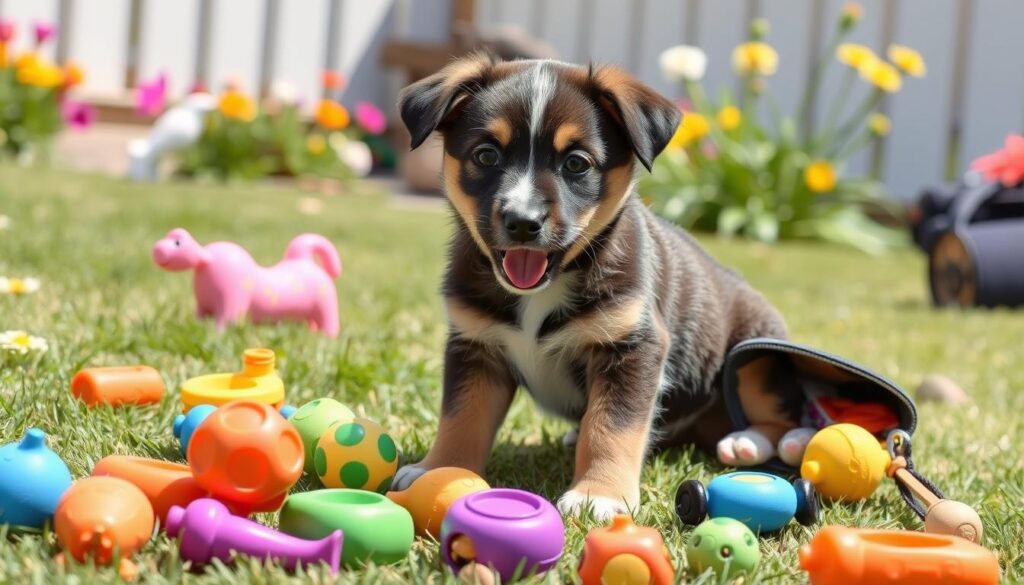
Feeding and Exercise Guidelines for Growing Puppies
As your 10-week-old puppy grows, they need the right puppy feeding routine and puppy exercise needs. These guidelines help your puppy get the nutrients and activity they need to thrive.
Nutritional Requirements at 10 Weeks
Puppies burn more calories than adult dogs, needing more food per pound. At 10 weeks, feed them high-quality puppy food in three to four meals a day. The right amount depends on their breed, size, and how active they are. A good rule is to give 1.5 to 2 cups of food daily, spread out in meals.
Safe Exercise Parameters
Puppies are full of energy, but they need careful exercise. Short, frequent play and walks are best. Start with short times and slowly increase as they grow. Avoid hard activities like jumping or running on hard surfaces to protect their joints and bones.
Rest and Recovery Periods
Puppies need lots of rest to grow and develop. Give your 10-week-old puppy a quiet, comfy spot for naps. This rest helps them have energy for play, training, and exploring.
By following these puppy feeding routine and puppy exercise needs tips, your 10-week-old puppy will grow into a healthy, happy friend. Always check with your vet if you have any questions about your puppy’s diet or exercise.
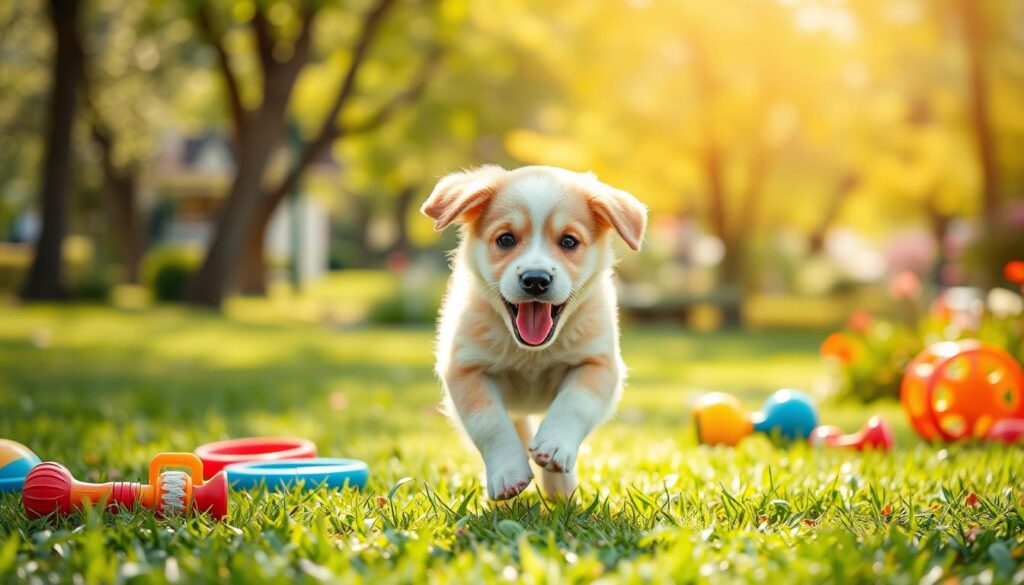
Socialization and Development Milestones
As your 10-week-old puppy grows, it’s key to socialize them and expose them to new things. This time is crucial for their confidence and ability to adapt. It helps them become well-adjusted and resilient dogs.
Puppy socialization is more than just playdates and classes. It’s about making positive connections with the world. Take them on short trips to places like pet stores or parks. Encourage them to interact with people and animals, and guide them through new experiences with patience and praise.
By 10 weeks, your puppy will start to show independence and problem-solving skills. They’ll begin to learn commands and explore their surroundings with curiosity. Celebrate their milestones and keep providing a nurturing environment for their growth.
FAQ
What is the typical daily routine for a 10-week-old puppy?
A 10-week-old puppy needs a daily routine for growth. Their day should include regular meals, potty breaks, play, training, and rest. This helps them stay healthy and happy.
How often should I feed my 10-week-old puppy?
Feed your puppy 3-4 times a day, every 4-6 hours. Choose high-quality puppy food. Watch their food amounts to ensure they get the right nutrition.
How much exercise does a 10-week-old puppy need?
Puppies this age are full of energy but need breaks. Short playtimes and rest periods are best. Keep exercise short, around 5-10 minutes, and safe.
When should I start training my 10-week-old puppy?
Start training right when you bring your puppy home. Teach basic commands, house-training, and crate training. Use positive methods to build a strong bond. Be patient and consistent.
How can I help my 10-week-old puppy adjust to their new home?
Give your puppy a routine, a cozy sleeping spot, and chances to explore. Introduce them slowly to new things. This helps them feel safe and confident.

